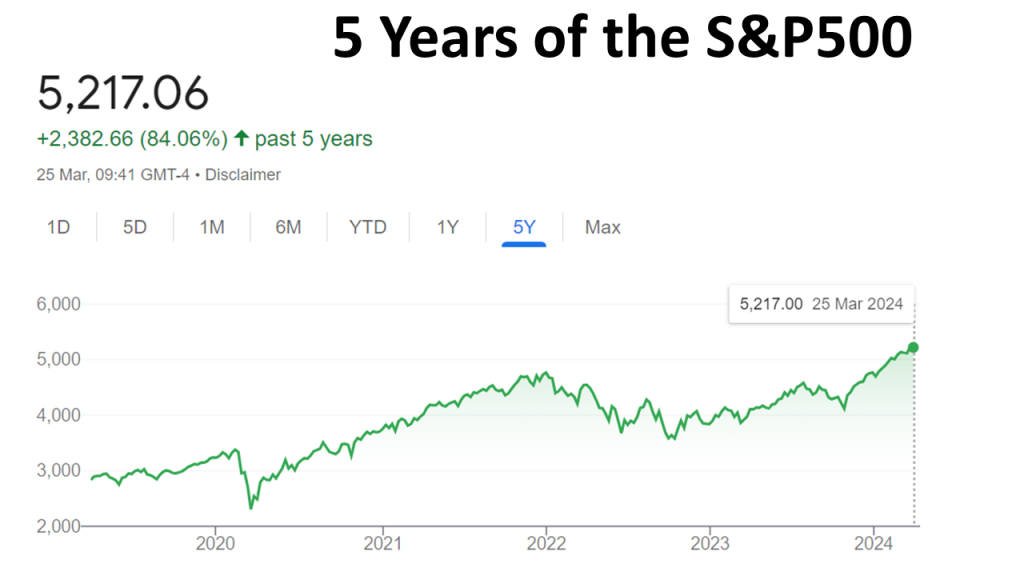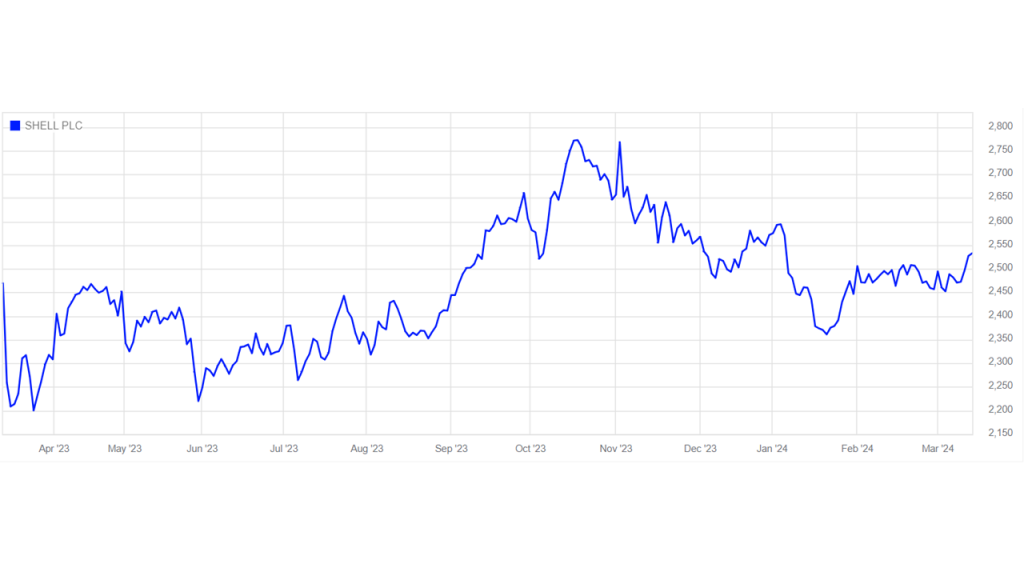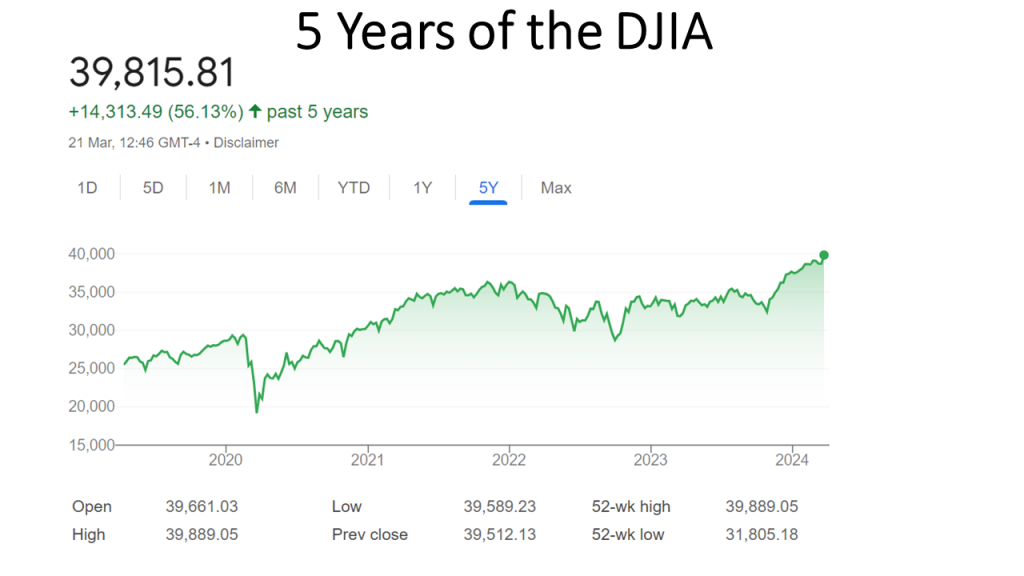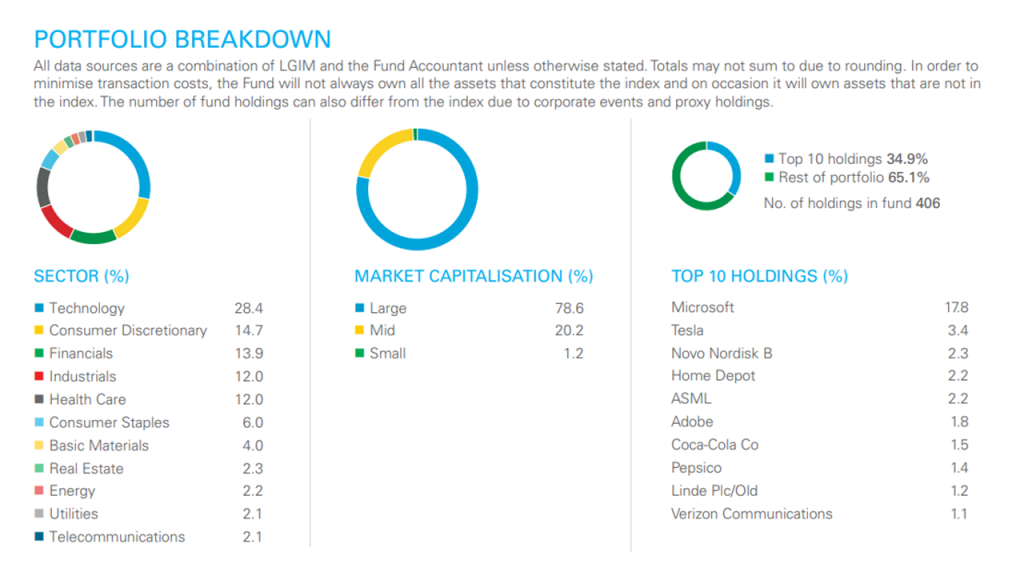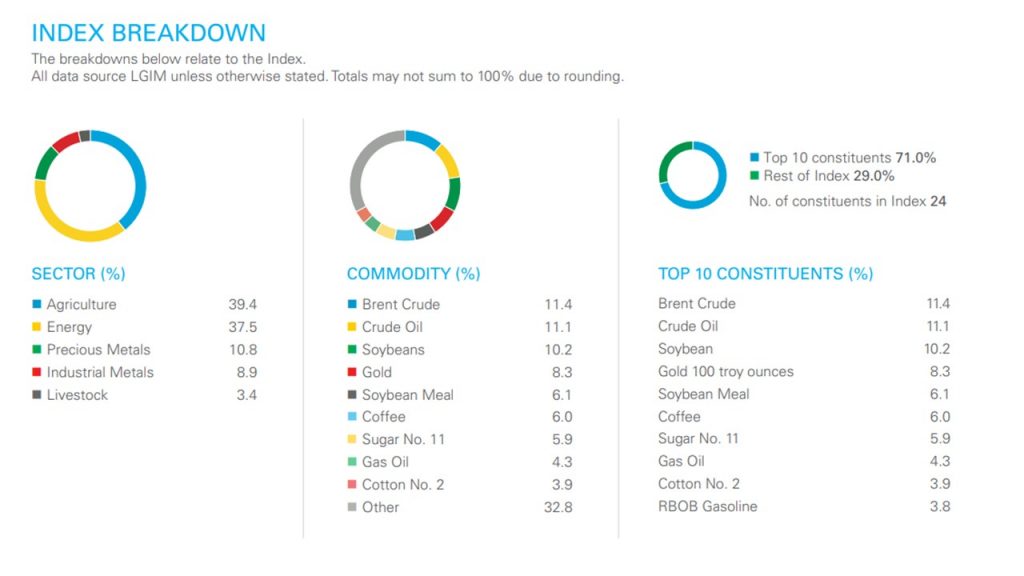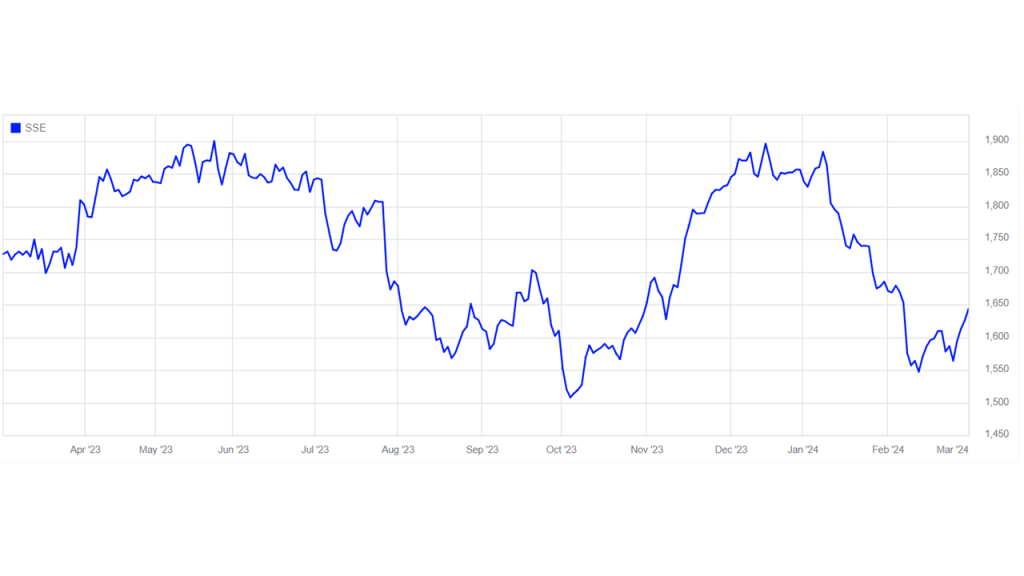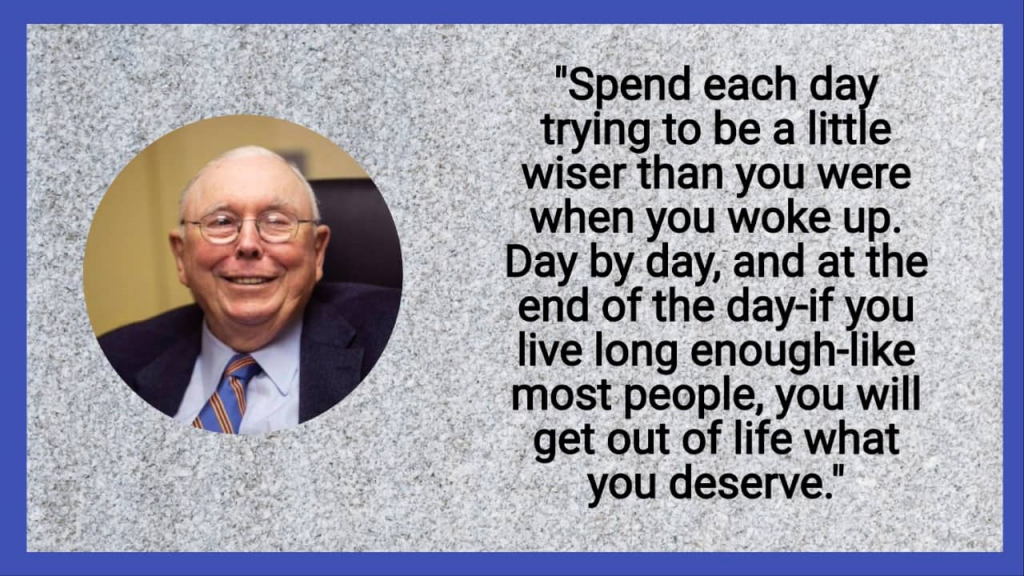printmgr file (berkshirehathaway.com)
Charlie Munger died on November 28, just 33 days before his 100th birthday.
Though born and raised in Omaha, he spent 80% of his life domiciled
elsewhere. Consequently, it was not until 1959 when he was 35 that I first met him.
In 1962, he decided that he should take up money management.
Three years later he told me – correctly! – that I had made a dumb decision in
buying control of Berkshire. But, he assured me, since I had already made the move,
he would tell me how to correct my mistake.
In what I next relate, bear in mind that Charlie and his family did not have a
dime invested in the small investing partnership that I was then managing and whose
money I had used for the Berkshire purchase. Moreover, neither of us expected that
Charlie would ever own a share of Berkshire stock.
Nevertheless, Charlie, in 1965, promptly advised me: “Warren, forget about
ever buying another company like Berkshire. But now that you control Berkshire, add
to it wonderful businesses purchased at fair prices and give up buying fair businesses
at wonderful prices. In other words, abandon everything you learned from your hero,
Ben Graham. It works but only when practiced at small scale.” With much back-sliding
I subsequently followed his instructions.
Many years later, Charlie became my partner in running Berkshire and,
repeatedly, jerked me back to sanity when my old habits surfaced. Until his death, he
continued in this role and together we, along with those who early on invested with
us, ended up far better off than Charlie and I had ever dreamed possible.
In reality, Charlie was the “architect” of the present Berkshire, and I acted as
the “general contractor” to carry out the day-by-day construction of his vision.
Charlie never sought to take credit for his role as creator but instead let me
take the bows and receive the accolades. In a way his relationship with me was part
older brother, part loving father. Even when he knew he was right, he gave me the
reins, and when I blundered he never – never –reminded me of my mistake.
In the physical world, great buildings are linked to their architect while those
who had poured the concrete or installed the windows are soon forgotten. Berkshire
has become a great company. Though I have long been in charge of the construction
crew; Charlie should forever be credited with being the architect.
2
BERKSHIRE HATHAWAY INC.
To the Shareholders of Berkshire Hathaway Inc.:
Berkshire has more than three million shareholder accounts. I am charged with writing a
letter every year that will be useful to this diverse and ever-changing group of owners, many of
whom wish to learn more about their investment.
Charlie Munger, for decades my partner in managing Berkshire, viewed this obligation
identically and would expect me to communicate with you this year in the regular manner. He and
I were of one mind regarding our responsibilities to Berkshire shareholders.
Writers find it useful to picture the reader they seek, and often they are hoping to attract a
mass audience. At Berkshire, we have a more limited target: investors who trust Berkshire with
their savings without any expectation of resale (resembling in attitude people who save in order to
buy a farm or rental property rather than people who prefer using their excess funds to purchase
lottery tickets or “hot” stocks).
Over the years, Berkshire has attracted an unusual number of such “lifetime” shareholders
and their heirs. We cherish their presence and believe they are entitled to hear every year both the
good and bad news, delivered directly from their CEO and not from an investor-relations officer
or communications consultant forever serving up optimism and syrupy mush.
In visualizing the owners that Berkshire seeks, I am lucky to have the perfect mental model,
my sister, Bertie. Let me introduce her.
For openers, Bertie is smart, wise and likes to challenge my thinking. We have never,
however, had a shouting match or anything close to a ruptured relationship. We never will.
Furthermore, Bertie, and her three daughters as well, have a large portion of their savings
in Berkshire shares. Their ownership spans decades, and every year Bertie will read what I have
to say. My job is to anticipate her questions and give her honest answers.
3
Bertie, like most of you, understands many accounting terms, but she is not ready for a
CPA exam. She follows business news – reading four newspapers daily – but doesn’t consider
herself an economic expert. She is sensible – very sensible – instinctively knowing that pundits
should always be ignored. After all, if she could reliably predict tomorrow’s winners, would she
freely share her valuable insights and thereby increase competitive buying? That would be like
finding gold and then handing a map to the neighbors showing its location.
Bertie understands the power – for good or bad – of incentives, the weaknesses of humans,
the “tells” that can be recognized when observing human behavior. She knows who is “selling”
and who can be trusted. In short, she is nobody’s fool.
So, what would interest Bertie this year?
Operating Results, Fact and Fiction
Let’s begin with the numbers. The official annual report begins on K-1 and extends for 124
pages. It is filled with a vast amount of information – some important, some trivial.
Among its disclosures many owners, along with financial reporters, will focus on page
K-72. There, they will find the proverbial “bottom line” labeled “Net earnings (loss).” The
numbers read $90 billion for 2021, ($23 billion) for 2022 and $96 billion for 2023.
What in the world is going on?
You seek guidance and are told that the procedures for calculating these “earnings” are
promulgated by a sober and credentialed Financial Accounting Standards Board (“FASB”),
mandated by a dedicated and hard-working Securities and Exchange Commission (“SEC”) and
audited by the world-class professionals at Deloitte & Touche (“D&T”). On page K-67, D&T pulls
no punches: “In our opinion, the financial statements . . . . . present fairly, in all material respects
(italics mine), the financial position of the Company . . . . . and the results of its operations . . . . .
for each of the three years in the period ended December 31, 2023 . . . . .”
So sanctified, this worse-than-useless “net income” figure quickly gets transmitted
throughout the world via the internet and media. All parties believe they have done their job – and,
legally, they have.
We, however, are left uncomfortable. At Berkshire, our view is that “earnings” should be a
sensible concept that Bertie will find somewhat useful – but only as a starting point – in
evaluating a business. Accordingly, Berkshire also reports to Bertie and you what we call
“operating earnings.” Here is the story they tell: $27.6 billion for 2021; $30.9 billion for 2022 and
$37.4 billion for 2023.
4
The primary difference between the mandated figures and the ones Berkshire prefers is that
we exclude unrealized capital gains or losses that at times can exceed $5 billion a day. Ironically,
our preference was pretty much the rule until 2018, when the “improvement” was mandated.
Galileo’s experience, several centuries ago, should have taught us not to mess with mandates from
on high. But, at Berkshire, we can be stubborn.
Make no mistake about the significance of capital gains: I expect them to be a very
important component of Berkshire’s value accretion during the decades ahead. Why else would
we commit huge dollar amounts of your money (and Bertie’s) to marketable equities just as I have
been doing with my own funds throughout my investing lifetime?
I can’t remember a period since March 11, 1942 – the date of my first stock purchase – that
I have not had a majority of my net worth in equities, U.S.-based equities. And so far, so good.
The Dow Jones Industrial Average fell below 100 on that fateful day in 1942 when I “pulled the
trigger.” I was down about $5 by the time school was out. Soon, things turned around and now that
index hovers around 38,000. America has been a terrific country for investors. All they have
needed to do is sit quietly, listening to no one.
It is more than silly, however, to make judgments about Berkshire’s investment value based
on “earnings” that incorporate the capricious day-by-day and, yes, even year-by-year movements
of the stock market. As Ben Graham taught me, “In the short run the market acts as a voting
machine; in the long run it becomes a weighing machine.”
What We Do
Our goal at Berkshire is simple: We want to own either all or a portion of businesses that
enjoy good economics that are fundamental and enduring. Within capitalism, some businesses will
flourish for a very long time while others will prove to be sinkholes. It’s harder than you would
think to predict which will be the winners and losers. And those who tell you they know the answer
are usually either self-delusional or snake-oil salesmen.
At Berkshire, we particularly favor the rare enterprise that can deploy additional capital at
high returns in the future. Owning only one of these companies – and simply sitting tight – can
deliver wealth almost beyond measure. Even heirs to such a holding can – ugh! – sometimes live
a lifetime of leisure.
We also hope these favored businesses are run by able and trustworthy managers, though
that is a more difficult judgment to make, however, and Berkshire has had its share
of disappointments.
5
In 1863, Hugh McCulloch, the first Comptroller of the United States, sent a letter to all
national banks. His instructions included this warning: “Never deal with a rascal under the
expectation that you can prevent him from cheating you.” Many bankers who thought they could
“manage” the rascal problem have learned the wisdom of Mr. McCulloch’s advice – and I have as
well. People are not that easy to read. Sincerity and empathy can easily be faked. That is as true
now as it was in 1863.
This combination of the two necessities I’ve described for acquiring businesses has for
long been our goal in purchases and, for a while, we had an abundance of candidates to evaluate.
If I missed one – and I missed plenty – another always came along.
Those days are long behind us; size did us in, though increased competition for purchases
was also a factor.
Berkshire now has – by far – the largest GAAP net worth recorded by any American
business. Record operating income and a strong stock market led to a yearend figure of $561
billion. The total GAAP net worth for the other 499 S&P companies – a who’s who of American
business – was $8.9 trillion in 2022. (The 2023 number for the S&P has not yet been tallied but is
unlikely to materially exceed $9.5 trillion.)
By this measure, Berkshire now occupies nearly 6% of the universe in which it operates.
Doubling our huge base is simply not possible within, say, a five-year period, particularly because
we are highly averse to issuing shares (an act that immediately juices net worth).
There remain only a handful of companies in this country capable of truly moving the
needle at Berkshire, and they have been endlessly picked over by us and by others. Some we can
value; some we can’t. And, if we can, they have to be attractively priced. Outside the U.S., there
are essentially no candidates that are meaningful options for capital deployment at Berkshire. All
in all, we have no possibility of eye-popping performance.
Nevertheless, managing Berkshire is mostly fun and always interesting. On the positive
side, after 59 years of assemblage, the company now owns either a portion or 100% of various
businesses that, on a weighted basis, have somewhat better prospects than exist at most large
American companies. By both luck and pluck, a few huge winners have emerged from a great
many dozens of decisions. And we now have a small cadre of long-time managers who never muse
about going elsewhere and who regard 65 as just another birthday.
Berkshire benefits from an unusual constancy and clarity of purpose. While we emphasize
treating our employees, communities and suppliers well – who wouldn’t wish to do so? – our
allegiance will always be to our country and our shareholders. We never forget that, though your
money is comingled with ours, it does not belong to us.
6
With that focus, and with our present mix of businesses, Berkshire should do a bit better
than the average American corporation and, more important, should also operate with materially
less risk of permanent loss of capital. Anything beyond “slightly better,” though, is wishful
thinking. This modest aspiration wasn’t the case when Bertie went all-in on Berkshire – but it
is now.
Our Not-So-Secret Weapon
Occasionally, markets and/or the economy will cause stocks and bonds of some large and
fundamentally good businesses to be strikingly mispriced. Indeed, markets can – and
will – unpredictably seize up or even vanish as they did for four months in 1914 and for a few days
in 2001. If you believe that American investors are now more stable than in the past, think back to
September 2008. Speed of communication and the wonders of technology facilitate instant
worldwide paralysis, and we have come a long way since smoke signals. Such instant panics won’t
happen often – but they will happen.
Berkshire’s ability to immediately respond to market seizures with both huge sums and
certainty of performance may offer us an occasional large-scale opportunity. Though the stock
market is massively larger than it was in our early years, today’s active participants are neither
more emotionally stable nor better taught than when I was in school. For whatever reasons, markets
now exhibit far more casino-like behavior than they did when I was young. The casino now resides
in many homes and daily tempts the occupants.
One fact of financial life should never be forgotten. Wall Street – to use the term in its
figurative sense – would like its customers to make money, but what truly causes its denizens’
juices to flow is feverish activity. At such times, whatever foolishness can be marketed will be
vigorously marketed – not by everyone but always by someone.
Occasionally, the scene turns ugly. The politicians then become enraged; the most flagrant
perpetrators of misdeeds slip away, rich and unpunished; and your friend next door becomes
bewildered, poorer and sometimes vengeful. Money, he learns, has trumped morality.
One investment rule at Berkshire has not and will not change: Never risk permanent loss
of capital. Thanks to the American tailwind and the power of compound interest, the arena in which
we operate has been – and will be – rewarding if you make a couple of good decisions during a
lifetime and avoid serious mistakes.
I believe Berkshire can handle financial disasters of a magnitude beyond any heretofore
experienced. This ability is one we will not relinquish. When economic upsets occur, as they will,
Berkshire’s goal will be to function as an asset to the country – just as it was in a very minor way
in 2008-9 – and to help extinguish the financial fire rather than to be among the many companies
that, inadvertently or otherwise, ignited the conflagration.
7
Our goal is realistic. Berkshire’s strength comes from its Niagara of diverse earnings
delivered after interest costs, taxes and substantial charges for depreciation and amortization
(“EBITDA” is a banned measurement at Berkshire). We also operate with minimal requirements
for cash, even if the country encounters a prolonged period of global economic weakness, fear and
near-paralysis.
Berkshire does not currently pay dividends, and its share repurchases are 100%
discretionary. Annual debt maturities are never material.
Your company also holds a cash and U.S. Treasury bill position far in excess of what
conventional wisdom deems necessary. During the 2008 panic, Berkshire generated cash from
operations and did not rely in any manner on commercial paper, bank lines or debt markets. We
did not predict the time of an economic paralysis but we were always prepared for one.
Extreme fiscal conservatism is a corporate pledge we make to those who have joined us in
ownership of Berkshire. In most years – indeed in most decades – our caution will likely prove to
be unneeded behavior – akin to an insurance policy on a fortress-like building thought to be
fireproof. But Berkshire does not want to inflict permanent financial damage – quotational
shrinkage for extended periods can’t be avoided – on Bertie or any of the individuals who have
trusted us with their savings.
Berkshire is built to last.
Non-controlled Businesses That Leave Us Comfortable
Last year I mentioned two of Berkshire’s long-duration partial-ownership
positions – Coca-Cola and American Express. These are not huge commitments like our Apple
position. Each only accounts for 4-5% of Berkshire’s GAAP net worth. But they are meaningful
assets and also illustrate our thought processes.
American Express began operations in 1850, and Coca-Cola was launched in an Atlanta
drug store in 1886. (Berkshire is not big on newcomers.) Both companies tried expanding into
unrelated areas over the years and both found little success in these attempts. In the past – but
definitely not now – both were even mismanaged.
But each was hugely successful in its base business, reshaped here and there as conditions
called for. And, crucially, their products “traveled.” Both Coke and AMEX became recognizable
names worldwide as did their core products, and the consumption of liquids and the need for
unquestioned financial trust are timeless essentials of our world.
8
During 2023, we did not buy or sell a share of either AMEX or Coke – extending our own
Rip Van Winkle slumber that has now lasted well over two decades. Both companies again
rewarded our inaction last year by increasing their earnings and dividends. Indeed, our share of
AMEX earnings in 2023 considerably exceeded the $1.3 billion cost of our long-ago purchase.
Both AMEX and Coke will almost certainly increase their dividends in 2024 – about 16%
in the case of AMEX – and we will most certainly leave our holdings untouched throughout the
year. Could I create a better worldwide business than these two enjoy? As Bertie will tell
you: “No way.”
Though Berkshire did not purchase shares of either company in 2023, your indirect
ownership of both Coke and AMEX increased a bit last year because of share repurchases we made
at Berkshire. Such repurchases work to increase your participation in every asset that Berkshire
owns. To this obvious but often overlooked truth, I add my usual caveat: All stock repurchases
should be price-dependent. What is sensible at a discount to business-value becomes stupid if done
at a premium.
The lesson from Coke and AMEX? When you find a truly wonderful business, stick with
it. Patience pays, and one wonderful business can offset the many mediocre decisions that
are inevitable.
This year, I would like to describe two other investments that we expect to maintain
indefinitely. Like Coke and AMEX, these commitments are not huge relative to our resources.
They are worthwhile, however, and we were able to increase both positions during 2023.
At yearend, Berkshire owned 27.8% of Occidental Petroleum’s common shares and also
owned warrants that, for more than five years, give us the option to materially increase our
ownership at a fixed price. Though we very much like our ownership, as well as the option,
Berkshire has no interest in purchasing or managing Occidental. We particularly like its vast oil
and gas holdings in the United States, as well as its leadership in carbon-capture initiatives, though
the economic feasibility of this technique has yet to be proven. Both of these activities are very
much in our country’s interest.
Not so long ago, the U.S. was woefully dependent on foreign oil, and carbon capture had
no meaningful constituency. Indeed, in 1975, U.S. production was eight million barrels of
oil-equivalent per day (“BOEPD”), a level far short of the country’s needs. From the favorable
energy position that facilitated the U.S. mobilization in World War II, the country had retreated to
become heavily dependent on foreign – potentially unstable – suppliers. Further declines in oil
production were predicted along with future increases in usage.
9
For a long time, the pessimism appeared to be correct, with production falling to five
million BOEPD by 2007. Meanwhile, the U.S. government created a Strategic Petroleum Reserve
(“SPR”) in 1975 to alleviate – though not come close to eliminating – this erosion of American
self-sufficiency.
And then – Hallelujah! – shale economics became feasible in 2011, and our energy
dependency ended. Now, U.S. production is more than 13 million BOEPD, and OPEC no longer
has the upper hand. Occidental itself has annual U.S. oil production that each year comes close to
matching the entire inventory of the SPR. Our country would be very – very – nervous today if
domestic production had remained at five million BOEPD, and it found itself hugely dependent
on non-U.S. sources. At that level, the SPR would have been emptied within months if foreign oil
became unavailable.
Under Vicki Hollub’s leadership, Occidental is doing the right things for both its country
and its owners. No one knows what oil prices will do over the next month, year, or decade. But
Vicki does know how to separate oil from rock, and that’s an uncommon talent, valuable to her
shareholders and to her country.
Additionally, Berkshire continues to hold its passive and long-term interest in five very
large Japanese companies, each of which operates in a highly-diversified manner somewhat similar
to the way Berkshire itself is run. We increased our holdings in all five last year after Greg Abel
and I made a trip to Tokyo to talk with their managements.
Berkshire now owns about 9% of each of the five. (A minor point: Japanese companies
calculate outstanding shares in a manner different from the practice in the U.S.) Berkshire has also
pledged to each company that it will not purchase shares that will take our holdings beyond 9.9%.
Our cost for the five totals ¥1.6 trillion, and the yearend market value of the five was ¥2.9 trillion.
However, the yen has weakened in recent years and our yearend unrealized gain in dollars was
61% or $8 billion.
Neither Greg nor I believe we can forecast market prices of major currencies. We also don’t
believe we can hire anyone with this ability. Therefore, Berkshire has financed most of its Japanese
position with the proceeds from ¥1.3 trillion of bonds. This debt has been very well-received in
Japan, and I believe Berkshire has more yen-denominated debt outstanding than any other
American company. The weakened yen has produced a yearend gain for Berkshire of $1.9 billion,
a sum that, pursuant to GAAP rules, has periodically been recognized in income over the
2020-23 period.
In certain important ways, all five companies – Itochu, Marubeni, Mitsubishi, Mitsui and
Sumitomo – follow shareholder-friendly policies that are much superior to those customarily
practiced in the U.S. Since we began our Japanese purchases, each of the five has reduced the
number of its outstanding shares at attractive prices.
10
Meanwhile, the managements of all five companies have been far less aggressive about
their own compensation than is typical in the United States. Note as well that each of the five is
applying only about 1⁄3 of its earnings to dividends. The large sums the five retain are used both to
build their many businesses and, to a lesser degree, to repurchase shares. Like Berkshire, the five
companies are reluctant to issue shares.
An additional benefit for Berkshire is the possibility that our investment may lead to
opportunities for us to partner around the world with five large, well-managed and well-respected
companies. Their interests are far more broad than ours. And, on their side, the Japanese CEOs
have the comfort of knowing that Berkshire will always possess huge liquid resources that can be
instantly available for such partnerships, whatever their size may be.
Our Japanese purchases began on July 4, 2019. Given Berkshire’s present size, building
positions through open-market purchases takes a lot of patience and an extended period of
“friendly” prices. The process is like turning a battleship. That is an important disadvantage which
we did not face in our early days at Berkshire.
The Scorecard in 2023
Every quarter we issue a press release that reports our summarized operating earnings (or
loss) in a manner similar to what is shown below. Here is the full-year compilation:
(in $ millions)
2023 2022
Insurance-underwriting …………………. $ 5,428 $ (30)
Insurance-investment income …………….. 9,567 6,484
Railroad ……………………………. 5,087 5,946
Utilities and energy ……………………. 2,331 3,904
Other businesses and miscellaneous items ……. 14,937 14,549
Operating earnings …………………….. $37,350 $30,853
At Berkshire’s annual gathering on May 6, 2023, I presented the first quarter’s results
which had been released early that morning. I followed with a short summary of the outlook for
the full year: (1) most of our non-insurance businesses faced lower earnings in 2023; (2) that
decline would be cushioned by decent results at our two largest non-insurance businesses, BNSF
and Berkshire Hathaway Energy (“BHE”) which, combined, had accounted for more than 30% of
operating earnings in 2022; (3) our investment income was certain to materially grow because the
huge U.S. Treasury bill position held by Berkshire had finally begun to pay us far more than the
pittance we had been receiving and (4) insurance would likely do well, both because its
underwriting earnings are not correlated to earnings elsewhere in the economy and, beyond that,
property-casualty insurance prices had strengthened.
11
Insurance came through as expected. I erred, however, in my expectations for both BNSF
and BHE. Let’s take a look at each.
Rail is essential to America’s economic future. It is clearly the most efficient
way – measured by cost, fuel usage and carbon intensity – of moving heavy materials to distant
destinations. Trucking wins for short hauls, but many goods that Americans need must travel to
customers many hundreds or even several thousands of miles away. The country can’t run without
rail, and the industry’s capital needs will always be huge. Indeed, compared to most American
businesses, railroads eat capital.
BNSF is the largest of six major rail systems that blanket North America. Our railroad
carries its 23,759 miles of main track, 99 tunnels, 13,495 bridges, 7,521 locomotives and assorted
other fixed assets at $70 billion on its balance sheet. But my guess is that it would cost at least
$500 billion to replicate those assets and decades to complete the job.
BNSF must annually spend more than its depreciation charge to simply maintain its present
level of business. This reality is bad for owners, whatever the industry in which they have invested,
but it is particularly disadvantageous in capital-intensive industries.
At BNSF, the outlays in excess of GAAP depreciation charges since our purchase 14 years
ago have totaled a staggering $22 billion or more than $11⁄2 billion annually. Ouch! That sort of
gap means BNSF dividends paid to Berkshire, its owner, will regularly fall considerably short of
BNSF’s reported earnings unless we regularly increase the railroad’s debt. And that we do not
intend to do.
Consequently, Berkshire is receiving an acceptable return on its purchase price, though less
than it might appear, and also a pittance on the replacement value of the property. That’s no
surprise to me or Berkshire’s board of directors. It explains why we could buy BNSF in 2010 at a
small fraction of its replacement value.
North America’s rail system moves huge quantities of coal, grain, autos, imported and
exported goods, etc. one-way for long distances and those trips often create a revenue problem for
back-hauls. Weather conditions are extreme and frequently hamper or even stymie the utilization
of track, bridges and equipment. Flooding can be a nightmare. None of this is a surprise. While I
sit in an always-comfortable office, railroading is an outdoor activity with many employees
working under trying and sometimes dangerous conditions.
An evolving problem is that a growing percentage of Americans are not looking for the
difficult, and often lonely, employment conditions inherent in some rail operations. Engineers must
deal with the fact that among an American population of 335 million, some forlorn or
mentally-disturbed Americans are going to elect suicide by lying in front of a 100-car,
extraordinarily heavy train that can’t be stopped in less than a mile or more. Would you like to be
the helpless engineer? This trauma happens about once a day in North America; it is far more
common in Europe and will always be with us.
12
Wage negotiations in the rail industry can end up in the hands of the President and
Congress. Additionally, American railroads are required to carry many dangerous products every
day that the industry would much rather avoid. The words “common carrier” define
railroad responsibilities.
Last year BNSF’s earnings declined more than I expected, as revenues fell. Though fuel
costs also fell, wage increases, promulgated in Washington, were far beyond the country’s inflation
goals. This differential may recur in future negotiations.
Though BNSF carries more freight and spends more on capital expenditures than any of
the five other major North American railroads, its profit margins have slipped relative to all five
since our purchase. I believe that our vast service territory is second to none and that therefore our
margin comparisons can and should improve.
I am particularly proud of both BNSF’s contribution to the country and the people who
work in sub-zero outdoor jobs in North Dakota and Montana winters to keep America’s
commercial arteries open. Railroads don’t get much attention when they are working but, were
they unavailable, the void would be noticed immediately throughout America.
A century from now, BNSF will continue to be a major asset of the country and of
Berkshire. You can count on that.
Our second and even more severe earnings disappointment last year occurred at BHE. Most
of its large electric-utility businesses, as well as its extensive gas pipelines, performed about as
expected. But the regulatory climate in a few states has raised the specter of zero profitability or
even bankruptcy (an actual outcome at California’s largest utility and a current threat in Hawaii).
In such jurisdictions, it is difficult to project both earnings and asset values in what was once
regarded as among the most stable industries in America.
For more than a century, electric utilities raised huge sums to finance their growth through
a state-by-state promise of a fixed return on equity (sometimes with a small bonus for superior
performance). With this approach, massive investments were made for capacity that would likely
be required a few years down the road. That forward-looking regulation reflected the reality that
utilities build generating and transmission assets that often take many years to construct. BHE’s
extensive multi-state transmission project in the West was initiated in 2006 and remains some
years from completion. Eventually, it will serve 10 states comprising 30% of the acreage in the
continental United States.
With this model employed by both private and public-power systems, the lights stayed on,
even if population growth or industrial demand exceeded expectations. The “margin of safety”
approach seemed sensible to regulators, investors and the public. Now, the fixed-but-satisfactory�return pact has been broken in a few states, and investors are becoming apprehensive that such
ruptures may spread. Climate change adds to their worries. Underground transmission may be
required but who, a few decades ago, wanted to pay the staggering costs for such construction?
13
At Berkshire, we have made a best estimate for the amount of losses that have occurred.
These costs arose from forest fires, whose frequency and intensity have increased – and will likely
continue to increase – if convective storms become more frequent.
It will be many years until we know the final tally from BHE’s forest-fire losses and can
intelligently make decisions about the desirability of future investments in vulnerable western
states. It remains to be seen whether the regulatory environment will change elsewhere.
Other electric utilities may face survival problems resembling those of Pacific Gas and
Electric and Hawaiian Electric. A confiscatory resolution of our present problems would obviously
be a negative for BHE, but both that company and Berkshire itself are structured to survive
negative surprises. We regularly get these in our insurance business, where our basic product is
risk assumption, and they will occur elsewhere. Berkshire can sustain financial surprises but we
will not knowingly throw good money after bad.
Whatever the case at Berkshire, the final result for the utility industry may be ominous:
Certain utilities might no longer attract the savings of American citizens and will be forced to
adopt the public-power model. Nebraska made this choice in the 1930s and there are many
public-power operations throughout the country. Eventually, voters, taxpayers and users will
decide which model they prefer.
When the dust settles, America’s power needs and the consequent capital expenditure will
be staggering. I did not anticipate or even consider the adverse developments in regulatory returns
and, along with Berkshire’s two partners at BHE, I made a costly mistake in not doing so.
Enough about problems: Our insurance business performed exceptionally well last year,
setting records in sales, float and underwriting profits. Property-casualty insurance (“P/C”)
provides the core of Berkshire’s well-being and growth. We have been in the business for 57 years
and despite our nearly 5,000-fold increase in volume – from $17 million to $83 billion – we have
much room to grow.
Beyond that, we have learned – too often, painfully – a good deal about what types of
insurance business and what sort of people to avoid. The most important lesson is that our
underwriters can be thin, fat, male, female, young, old, foreign or domestic. But they can’t be
optimists at the office, however desirable that quality may generally be in life.
Surprises in the P/C business – which can occur decades after six-month or one-year
policies have expired – are almost always negative. The industry’s accounting is designed to
recognize this reality, but estimation mistakes can be huge. And when charlatans are involved,
detection is often both slow and costly. Berkshire will always attempt to be accurate in its estimates
of future loss payments but inflation – both monetary and the “legal” variety – is a wild card.
14
I’ve told the story of our insurance operations so many times that I will simply direct
newcomers to page 18. Here, I will only repeat that our position would not be what it is if Ajit Jain
had not joined Berkshire in 1986. Before that lucky day – aside from an almost unbelievably
wonderful experience with GEICO that began early in 1951 and will never end – I was largely
wandering in the wilderness, as I struggled to build our insurance operation.
Ajit’s achievements since joining Berkshire have been supported by a large cast of
hugely-talented insurance executives in our various P/C operations. Their names and faces are
unknown to most of the press and the public. Berkshire’s lineup of managers, however, is to P/C
insurance what Cooperstown’s honorees are to baseball.
Bertie, you can feel good about the fact that you own a piece of an incredible P/C operation
that now operates worldwide with unmatched financial resources, reputation and talent. It carried
the day in 2023.
What is it with Omaha?
Come to Berkshire’s annual gathering on May 4, 2024. On stage you will see the three
managers who now bear the prime responsibilities for steering your company. What, you may
wonder, do the three have in common? They certainly don’t look alike. Let’s dig deeper.
Greg Abel, who runs all non-insurance operations for Berkshire – and in all respects is
ready to be CEO of Berkshire tomorrow – was born and raised in Canada (he still plays hockey).
In the 1990s, however, Greg lived for six years in Omaha just a few blocks away from me. During
that period, I never met him.
A decade or so earlier, Ajit Jain, who was born, raised and educated in India, lived with his
family in Omaha only a mile or so from my home (where I’ve lived since 1958). Both Ajit and his
wife, Tinku, have many Omaha friends, though it’s been more than three decades since they moved
to New York (in order to be where much of the action in reinsurance takes place).
Missing from the stage this year will be Charlie. He and I were both born in Omaha about
two miles from where you will sit at our May get-together. In his first ten years, Charlie lived
about a half-mile from where Berkshire has long maintained its office. Both Charlie and I spent
our early years in Omaha public schools and were indelibly shaped by our Omaha childhood. We
didn’t meet, however, until much later. (A footnote that may surprise you: Charlie lived under 15
of America’s 45 presidents. People refer to President Biden as #46, but that numbering counts
Grover Cleveland as both #22 and #24 because his terms were not consecutive. America is a very
young country.)
15
Moving to the corporate level, Berkshire itself relocated in 1970 from its 81 years of
residence in New England to settle in Omaha, leaving its troubles behind and blossoming in its
new home.
As a final punctuation point to the “Omaha Effect,” Bertie – yes that Bertie – spent her
early formative years in a middle-class neighborhood in Omaha and, many decades later, emerged
as one of the country’s great investors.
You may be thinking that she put all of her money in Berkshire and then simply sat on it.
But that’s not true. After starting a family in 1956, Bertie was active financially for 20 years:
holding bonds, putting 1⁄3 of her funds in a publicly-held mutual fund and trading stocks with some
frequency. Her potential remained unnoticed.
Then, in 1980, when 46, and independent of any urgings from her brother, Bertie decided
to make her move. Retaining only the mutual fund and Berkshire, she made no new trades during
the next 43 years. During that period, she became very rich, even after making large philanthropic
gifts (think nine figures).
Millions of American investors could have followed her reasoning which involved only
the common sense she had somehow absorbed as a child in Omaha. And, taking no chances, Bertie
returns to Omaha every May to be re-energized.
So what is going on? Is it Omaha’s water? Is it Omaha’s air? Is it some strange planetary
phenomenon akin to that which has produced Jamaica’s sprinters, Kenya’s marathon runners, or
Russia’s chess experts? Must we wait until AI someday yields the answer to this puzzle?
Keep an open mind. Come to Omaha in May, inhale the air, drink the water and say “hi”
to Bertie and her good-looking daughters. Who knows? There is no downside, and, in any event,
you will have a good time and meet a huge crowd of friendly people.
To top things off, we will have available the new 4th edition of Poor Charlie’s Almanack.
Pick up a copy. Charlie’s wisdom will improve your life as it has mine.
February 24, 2024 Warren E. Buffett
Chairman of the Board
16
Berkshire’s Performance vs. the S&P 500
Annual Percentage Change
Year
in Per-Share
Market Value of
Berkshire
in S&P 500
with Dividends
Included
1965 ……………………………………………………………… 49.5 10.0
1966 ……………………………………………………………… (3.4) (11.7)
1967 ……………………………………………………………… 13.3 30.9
1968 ……………………………………………………………… 77.8 11.0
1969 ……………………………………………………………… 19.4 (8.4)
1970 ……………………………………………………………… (4.6) 3.9
1971 ……………………………………………………………… 80.5 14.6
1972 ……………………………………………………………… 8.1 18.9
1973 ……………………………………………………………… (2.5) (14.8)
1974 ……………………………………………………………… (48.7) (26.4)
1975 ……………………………………………………………… 2.5 37.2
1976 ……………………………………………………………… 129.3 23.6
1977 ……………………………………………………………… 46.8 (7.4)
1978 ……………………………………………………………… 14.5 6.4
1979 ……………………………………………………………… 102.5 18.2
1980 ……………………………………………………………… 32.8 32.3
1981 ……………………………………………………………… 31.8 (5.0)
1982 ……………………………………………………………… 38.4 21.4
1983 ……………………………………………………………… 69.0 22.4
1984 ……………………………………………………………… (2.7) 6.1
1985 ……………………………………………………………… 93.7 31.6
1986 ……………………………………………………………… 14.2 18.6
1987 ……………………………………………………………… 4.6 5.1
1988 ……………………………………………………………… 59.3 16.6
1989 ……………………………………………………………… 84.6 31.7
1990 ……………………………………………………………… (23.1) (3.1)
1991 ……………………………………………………………… 35.6 30.5
1992 ……………………………………………………………… 29.8 7.6
1993 ……………………………………………………………… 38.9 10.1
1994 ……………………………………………………………… 25.0 1.3
1995 ……………………………………………………………… 57.4 37.6
1996 ……………………………………………………………… 6.2 23.0
1997 ……………………………………………………………… 34.9 33.4
1998 ……………………………………………………………… 52.2 28.6
1999 ……………………………………………………………… (19.9) 21.0
2000 ……………………………………………………………… 26.6 (9.1)
2001 ……………………………………………………………… 6.5 (11.9)
2002 ……………………………………………………………… (3.8) (22.1)
2003 ……………………………………………………………… 15.8 28.7
2004 ……………………………………………………………… 4.3 10.9
2005 ……………………………………………………………… 0.8 4.9
2006 ……………………………………………………………… 24.1 15.8
2007 ……………………………………………………………… 28.7 5.5
2008 ……………………………………………………………… (31.8) (37.0)
2009 ……………………………………………………………… 2.7 26.5
2010 ……………………………………………………………… 21.4 15.1
2011 ……………………………………………………………… (4.7) 2.1
2012 ……………………………………………………………… 16.8 16.0
2013 ……………………………………………………………… 32.7 32.4
2014 ……………………………………………………………… 27.0 13.7
2015 ……………………………………………………………… (12.5) 1.4
2016 ……………………………………………………………… 23.4 12.0
2017 ……………………………………………………………… 21.9 21.8
2018 ……………………………………………………………… 2.8 (4.4)
2019 ……………………………………………………………… 11.0 31.5
2020 ……………………………………………………………… 2.4 18.4
2021 ……………………………………………………………… 29.6 28.7
2022 ……………………………………………………………… 4.0 (18.1)
2023 ……………………………………………………………… 15.8 26.3
Compounded Annual Gain – 1965-2023 ……………………………………. 19.8% 10.2%
Overall Gain – 1964-2023 ……………………………………………… 4,384,748% 31,223%
Note: Data are for calendar years with these exceptions: 1965 and 1966, year ended 9/30; 1967, 15 months ended 12/31.
17
